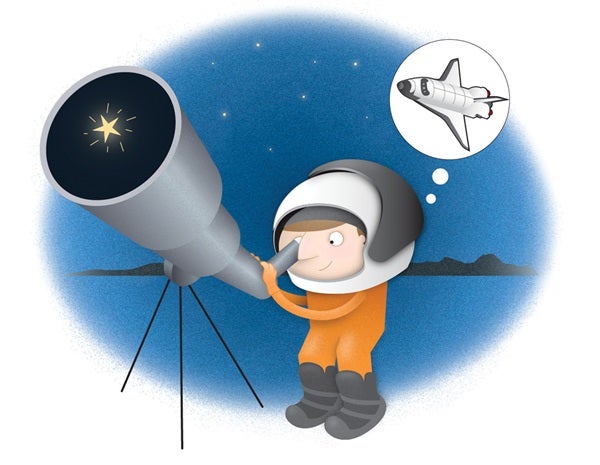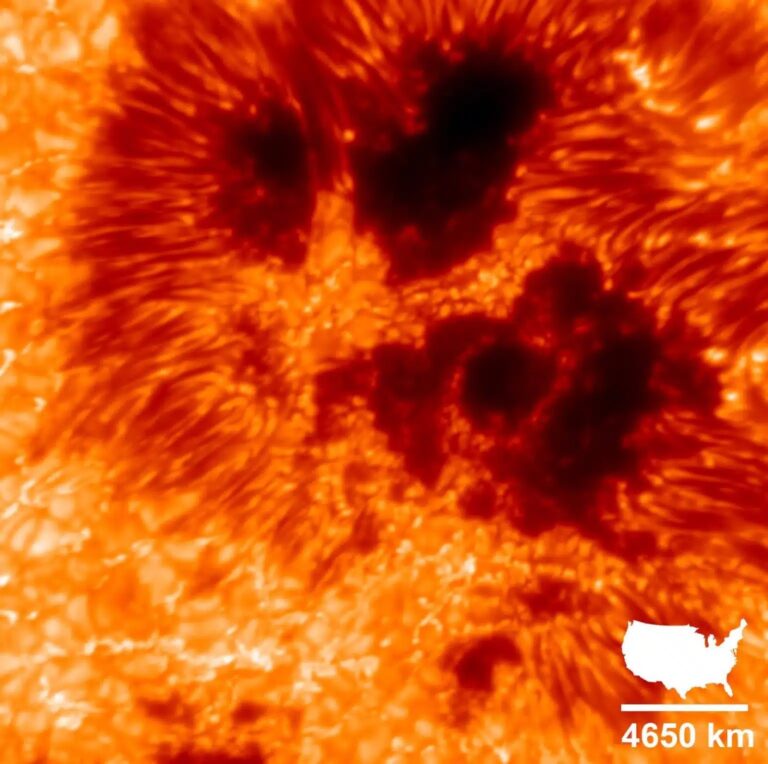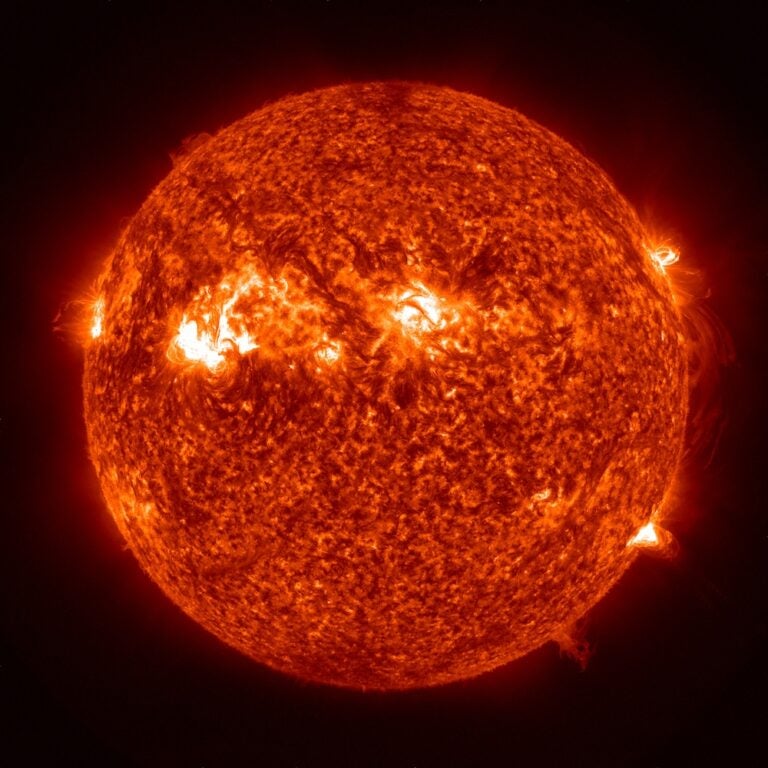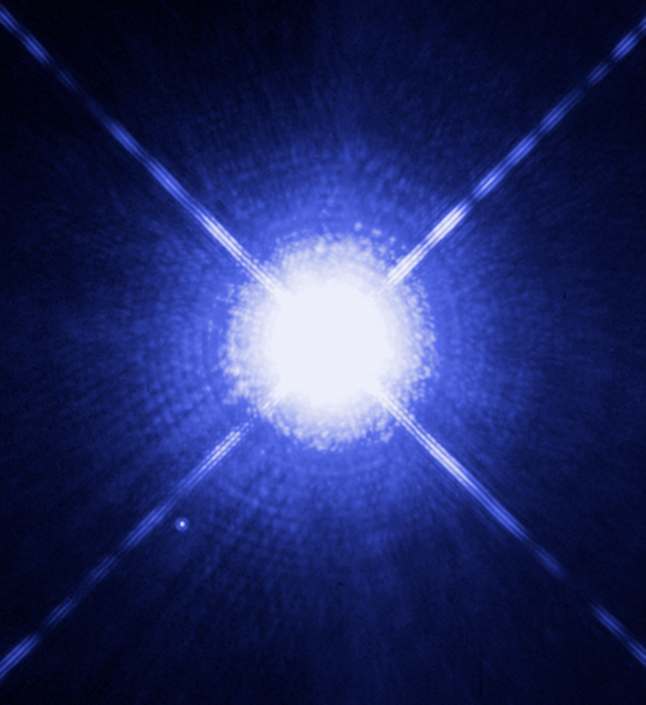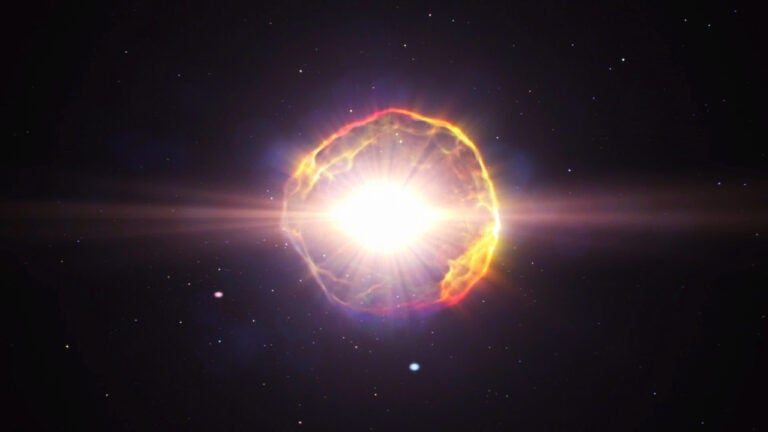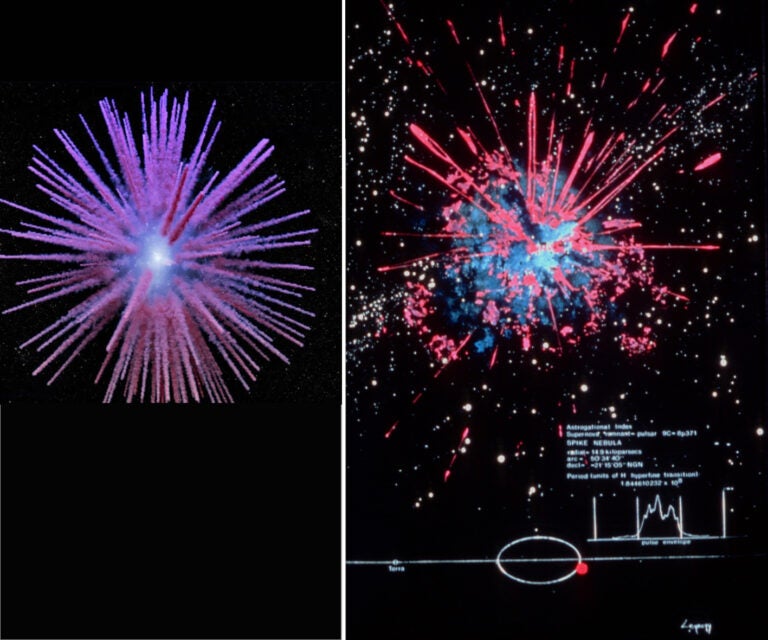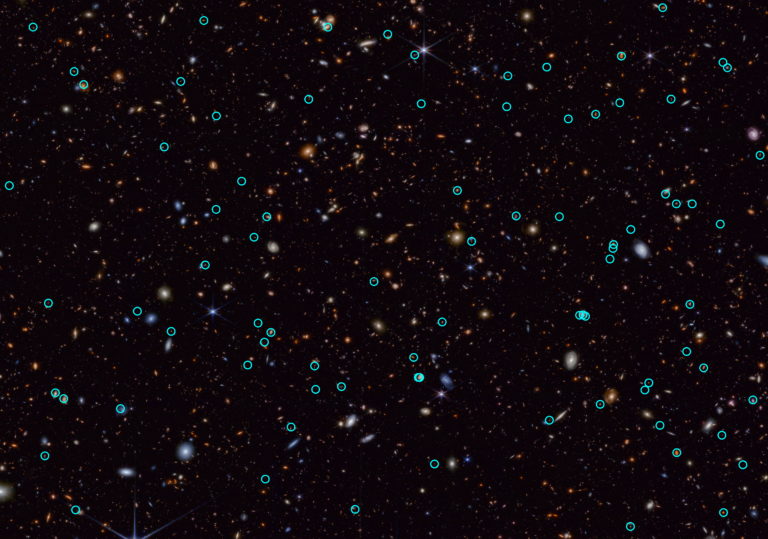Sirius is the closest of seven stars of 1st magnitude or brighter currently visible after dark from mid-northern latitudes. Listed in order of increasing distance, they are Sirius, Procyon, Pollux, Capella, Aldebaran, Betelgeuse, and Rigel. How far away are they? Our answers include each star’s distance in light-years based on parallax measures made by the Hipparcos satellite, followed by a look at what was happening on our home planet when its light departed for a 2015 arrival.
Sirius (8.6 light-years): What was going on in late May 2006 when the light from Sirius began its 50.6-trillion-mile (81.4 trillion kilometers) journey earthward? NASA’s Cassini spacecraft was in the process of discovering lakes of liquid methane or ethane on Titan’s surface, while Pluto was in its last months as an officially recognized planet. From your perspective, a personal or family-related milestone like a graduation, wedding, birth, or death might have overshadowed these events. Depending on your age, you’ll likely recall lifetime experiences for each of the next four stars.
Procyon (11.4 light-years): When Procyon’s light left around mid-summer 2003, astronomers were enjoying close-up views of Mars as the Red Planet made its nearest approach to Earth in centuries. If you’re a member of the high school class of 2015 anticipating a June graduation, consider this. Back then, you were about to enter first grade. Most of your entire elementary/high school education is written on a beam of light from Procyon!
Pollux (34 light-years): Light from Pollux departed early in 1981 at the same time the Space Shuttle Program opened with the orbital test flight of Columbia. The Reagan era in American politics was beginning, and Saturday evenings brought us the escape shows Love Boat and Fantasy Island.
Aldebaran (65 light-years): In 1950, the year Aldebaran’s light began its earthly journey, Dutch astronomer Jan Oort proposed the existence of an orbiting cloud of comets (now called the Oort Cloud) at the outer reaches of the solar system. If you’ve arrived at retirement age (typically, mid to late 60s), Aldebaran shines in your honor. Its ruddy light left around the time you were born, continued onward as you went to school, began a career, got married, and had children and then grandchildren. It finally arrived just as you retired — literally the journey of a lifetime!
Betelgeuse (640 light-years): When it comes to accurately knowing a star’s distance, we now enter a realm of uncertainty. The parallax of Betelgeuse is so minuscule that even Hipparcos satellite measurements are iffy. The currently accepted figure means the photons striking your retinas left during the latter part of the 14th century. Since none of us was around then, we have to rely on historical events. When light left the surface of Betelgeuse, China’s Ming Dynasty had begun, the Aztecs were settling in what is now Mexico City, and the European Renaissance was in its infancy.
Rigel (860 light-years): Rigel’s distance is variously reported as between 700 and 900 light-years, with a Hipparcos measurement hinting at 860 light-years. Imagine a star so luminous that it ranks seventh in brightness in our nighttime sky even though the void separating us is so vast that its light has been traveling since the middle of the 12th century! When we look at Rigel, our eyes are picking up starlight launched earthward around the time of the early Crusades.
Defining a star’s distance by the events occurring on Earth when its light began its journey adds a dimension not achieved by mere numbers. Later this year, we’ll revisit the distance/history link with a look at summer stars.
Questions, comments, or suggestions? Email me at gchaple@hotmail.com. Next month: What’s in a name? Clear skies!


